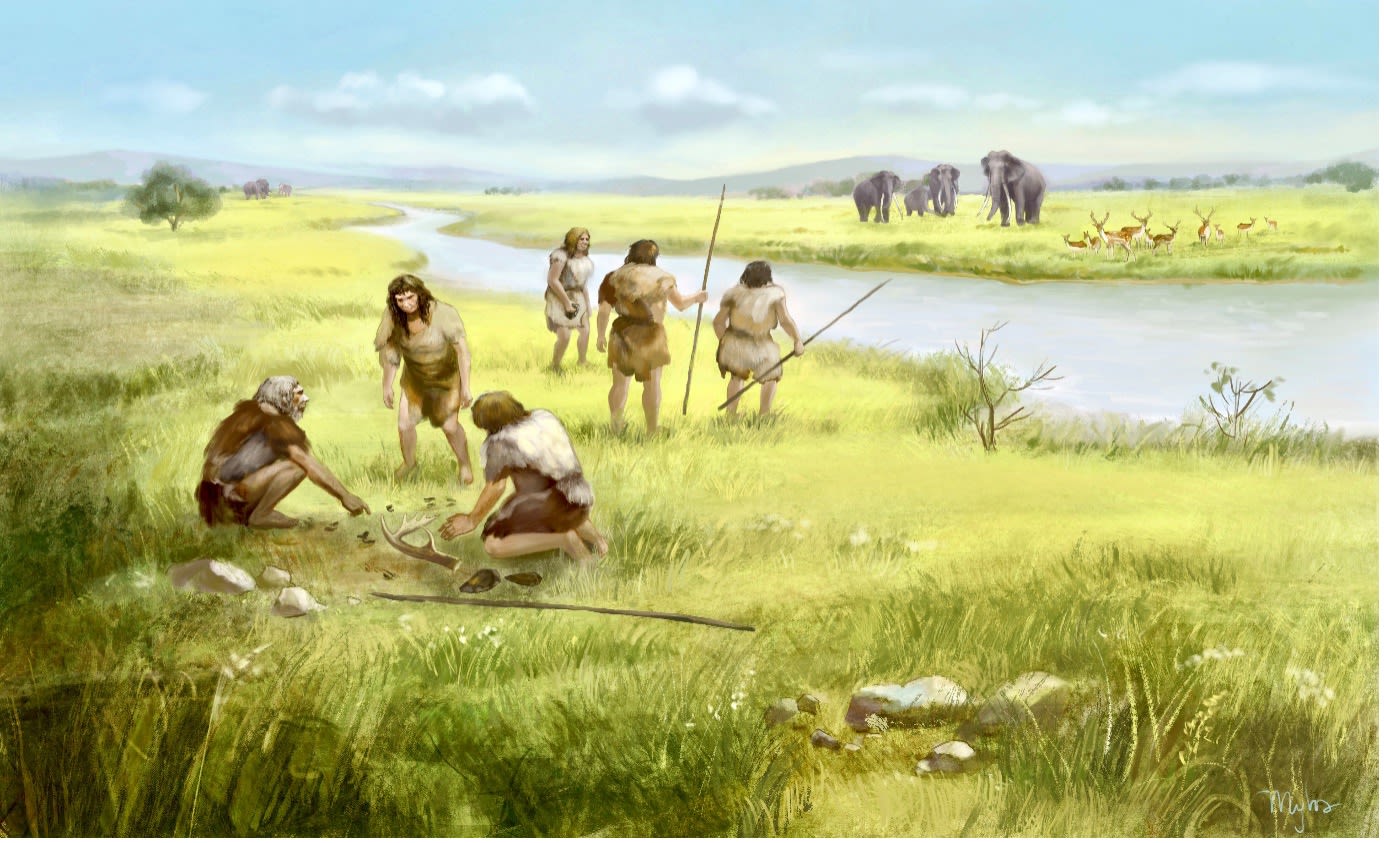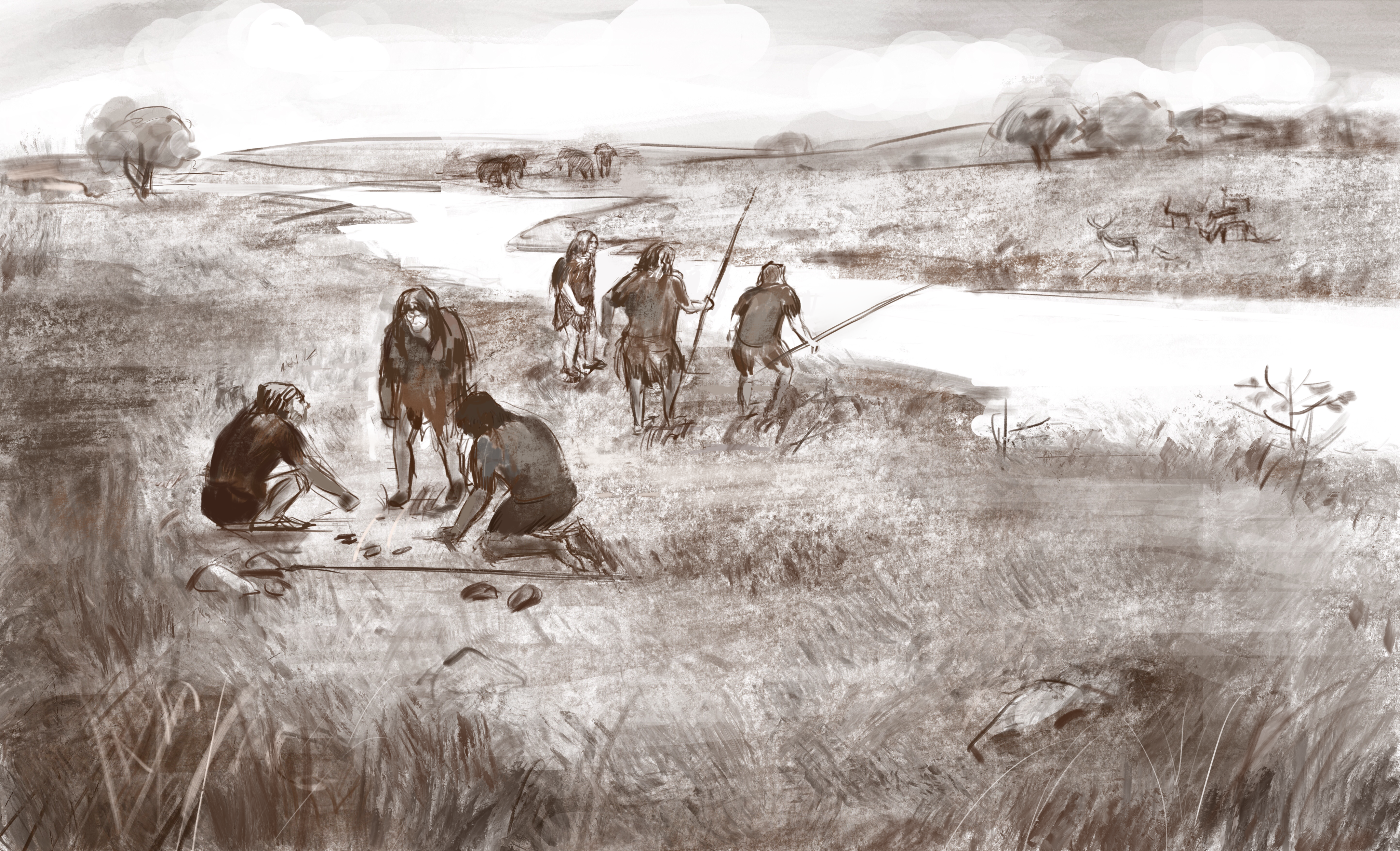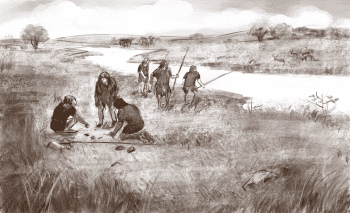Early humans potentially occupied Britain during an ice age, archaeologists suggest

After six years of excavations, archaeologists from the University of Cambridge can reveal early humans lived on the banks of the River Stour in Kent 712,000 to 621,000 years ago, and seem to have reoccupied the region during a glaciation (ice age) event c.440,000 years ago.
For a century we have known early humans lived on the banks of the ancient Stour River in Canterbury, Kent (UK). We know this because thousands of Palaeolithic stone artefacts have been found here since the 1920s.
An international team, led by archaeologists from the University of Cambridge, have now discovered that the earliest artefacts, discovered in an area known as Old Park, likely date from 712,000 to 621,000 years ago.
As importantly, younger archaeological layers at the site date to the Anglian glaciation – one of northern Europe’s most extreme ice ages – and raise the possibility that humans occupied these northern latitudes during this harsh climatic event.
A selection of the flake artefacts recovered from the excavations at Old Park, Canterbury (UK).
A selection of the flake artefacts recovered from the excavations at Old Park, Canterbury (UK).
The research, published today in the journal Nature Ecology and Evolution, was led by Dr Alastair Key from the Department of Archaeology at the University of Cambridge. Having established excavations in 2020, his team first excavated in an area with sediment dating to 542 ± 30 thousand years ago.
This is an exceptionally early age for stone artefacts in the UK, and after publishing these first results they thought this was as old as the site went. From 2022, however, they opened trenches across a much larger area and discovered sediment dating from 773,000 to 607,000 years ago (with humans most likely present 712,000 to 621,0000 years ago).
"Old Park is unique in the UK as it retains these exceptionally high, and therefore old, artefact retaining gravels. It is the fact we can excavate these sediments that’s so important. This isn’t possible at earlier archaeological occurrences in the UK, as they are located in cliffs or are buried too deeply,” explains Dr Key.
The makers of these very early tools are a species commonly known as Homo heidelbergensis.
What was even more unexpected was the discovery of artefacts made by later H. heidelbergensis populations, who can broadly be thought of as the ancestors of early Neanderthals.
Around 440,000 years ago, in the middle of Britain’s harshest ice age, a layer of gravel was deposited by the Stour River and then covered by sand. Sandwiched between these two sediments the archaeologists discovered exceptionally sharp stone tools.
“The clearest explanation is that these humans were making flint tools directly on top of the gravel during this ice age, and that these tools were then quickly covered before their edges abraded and broke,” Dr James Clark from the University of Cambridge, who has led the last two seasons at the site, explains. “This is exciting because it was previously assumed to be impossible for humans to survive in Britain during these cold phases, meaning the evidence is testament to the adaptability of these very early populations”.
The team are quick to stress that these populations may only have been summer visitors, or could have occupied the region during the brief, warmer interglacial periods found within the broader glacial event.
Alongside the 440,000-year-old artefacts, microscopic plant fossils called phytoliths were also discovered, which suggested these populations lived in a relatively cold grassland environment.
These data are cautiously interpreted, but hint at these early humans sharing an ecological niche with grassland fauna, including extinct species of horse and rhino.
“If humans lived in a cool-to-cold grassland ecosystem at this time, even if only during the summer, it raises important questions about how they did this. Did these populations track migrating prey? Could they have made clothing with sewn seems or shelters to guard against the cold?” states Dr Michaela Leonardi, a University of Cambridge and Natural History Museum palaeoecologist who modelled Old Park’s ancient environment as part of the research.

The study is also important for contextualising hundreds of stone tool artefacts historically found at the site.
One category of tool, known as an Acheulean handaxe, has always been difficult to interpret at the site as two very distinct types are present; one that is highly shaped and ovate, and one that more roughly made and elongated.
With the identification of two archaeological layers separated by c.200,000 years, these tools appear to have been made by two distinct human populations, potentially with different cognitive and behavioural capabilities.
The more roughly made handaxes are potentially the oldest examples known in northern Europe and are morphologically atypical for the region, while the younger heavily shaped ones share attributes observed widely at other Acheulean sites.
Work at the site continues and would not be possible without the exceptional undergraduate and postgraduate students who help to excavate each year, many of whom are on the Palaeolithic and Mesolithic Archaeology track of Cambridge’s MPhil (master's degree) in Archaeology.
The research was funded by the Leakey Foundation, McDonald Institute for Archaeological Research (University of Cambridge), and University of Kent.
Four of the handaxes recovered from Fordwich Pit, Old Park, Canterbury (UK). Two of the rough elongated forms can be observed in the top row, while two of the more heavily flaked and likely younger handaxes are on the bottom row.
Four of the handaxes recovered from Fordwich Pit, Old Park, Canterbury (UK). Two of the rough elongated forms can be observed in the top row, while two of the more heavily flaked and likely younger handaxes are on the bottom row.
Published 1 September 2025
The text in this work is licensed under a Creative Commons Attribution 4.0 International License





